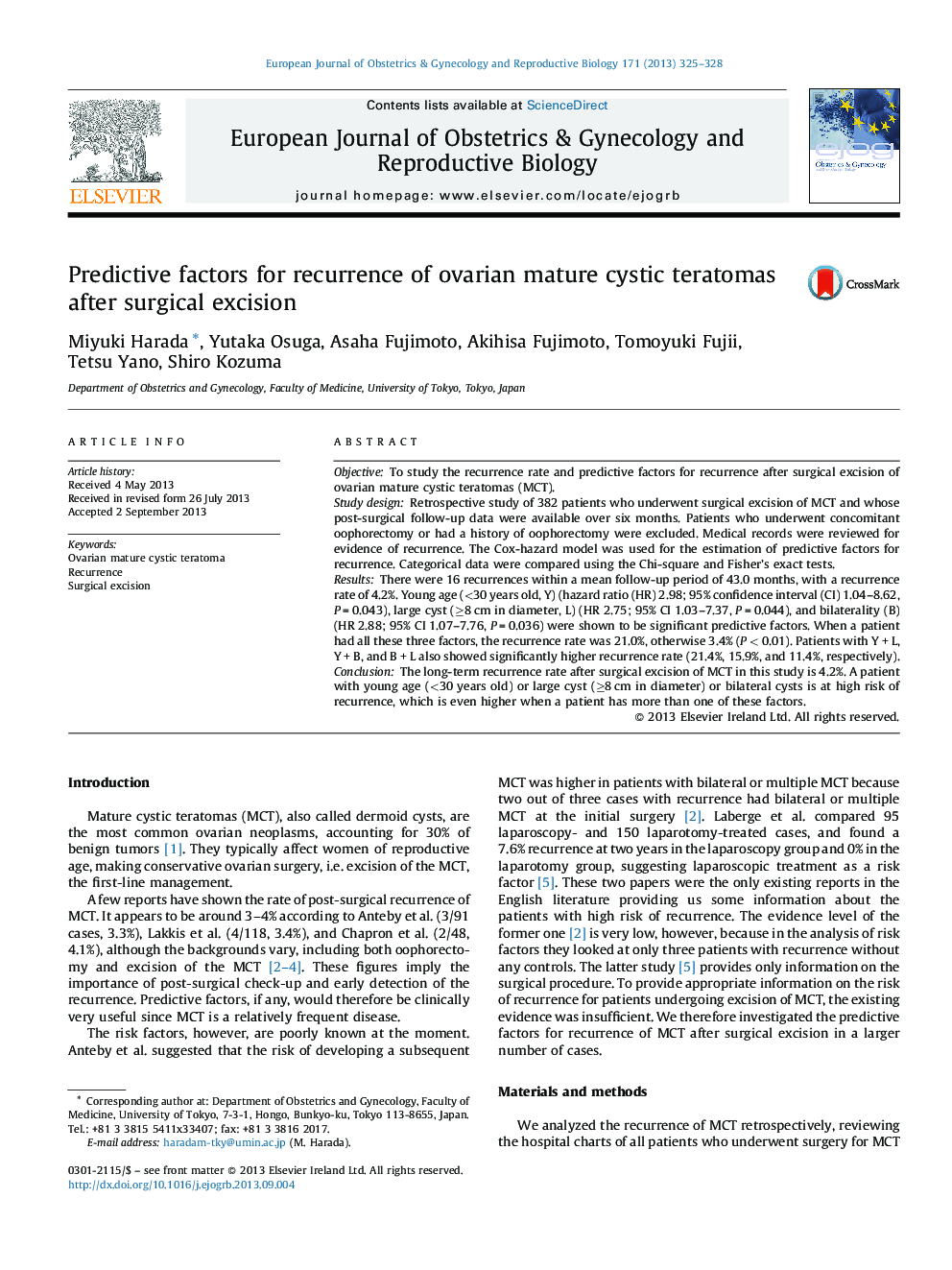| Article ID | Journal | Published Year | Pages | File Type |
|---|---|---|---|---|
| 3920181 | European Journal of Obstetrics & Gynecology and Reproductive Biology | 2013 | 4 Pages |
ObjectiveTo study the recurrence rate and predictive factors for recurrence after surgical excision of ovarian mature cystic teratomas (MCT).Study designRetrospective study of 382 patients who underwent surgical excision of MCT and whose post-surgical follow-up data were available over six months. Patients who underwent concomitant oophorectomy or had a history of oophorectomy were excluded. Medical records were reviewed for evidence of recurrence. The Cox-hazard model was used for the estimation of predictive factors for recurrence. Categorical data were compared using the Chi-square and Fisher's exact tests.ResultsThere were 16 recurrences within a mean follow-up period of 43.0 months, with a recurrence rate of 4.2%. Young age (<30 years old, Y) (hazard ratio (HR) 2.98; 95% confidence interval (CI) 1.04–8.62, P = 0.043), large cyst (≥8 cm in diameter, L) (HR 2.75; 95% CI 1.03–7.37, P = 0.044), and bilaterality (B) (HR 2.88; 95% CI 1.07–7.76, P = 0.036) were shown to be significant predictive factors. When a patient had all these three factors, the recurrence rate was 21.0%, otherwise 3.4% (P < 0.01). Patients with Y + L, Y + B, and B + L also showed significantly higher recurrence rate (21.4%, 15.9%, and 11.4%, respectively).ConclusionThe long-term recurrence rate after surgical excision of MCT in this study is 4.2%. A patient with young age (<30 years old) or large cyst (≥8 cm in diameter) or bilateral cysts is at high risk of recurrence, which is even higher when a patient has more than one of these factors.
